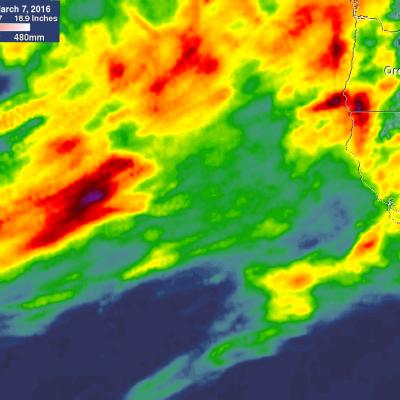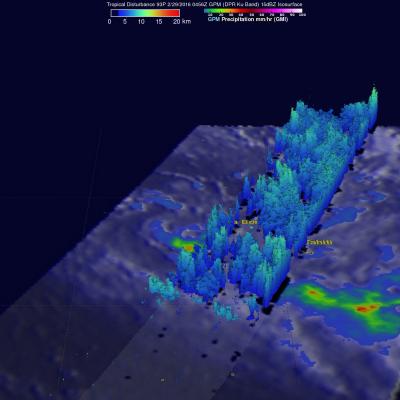IMERG Analyzes El Niño Fueled California Storms
After a break in February, El Nino fueled storms have started pounding California as they move in from the Pacific Ocean. Northern California has been especially hard hit with heavy rainfall and strong winds being reported. Heavy rainfall north of Sacramento caused flooding that killed a woman in Olivehurst, California. Rain and snowfall in the Sierra Nevada mountains may help to alleviate the long lasting California drought. An analysis of total precipitation from February 29 to March 7, 1016 was accomplished using data collected by NASA's Multi-satellitE Retrievals for GPM (IMERG). This




